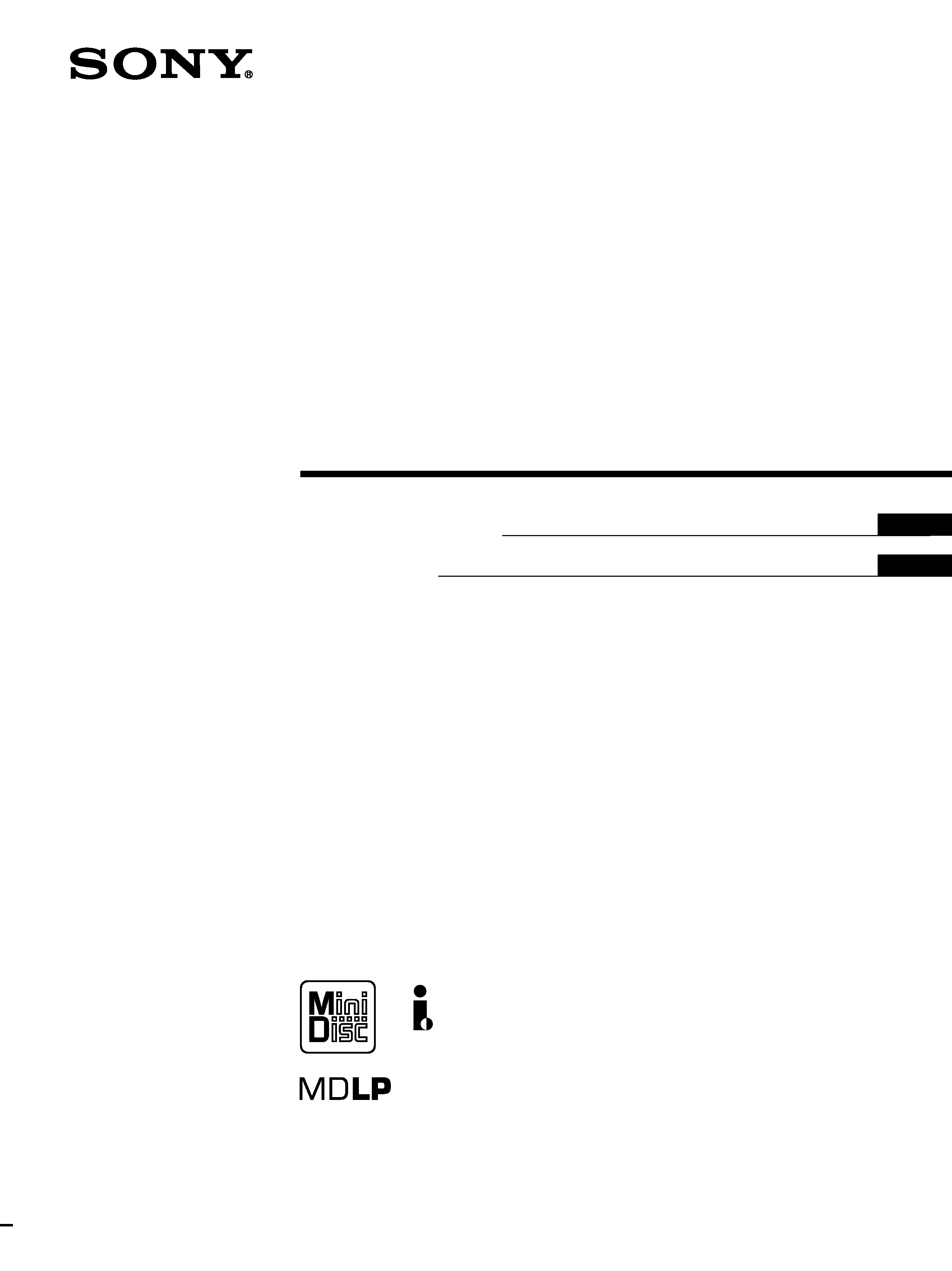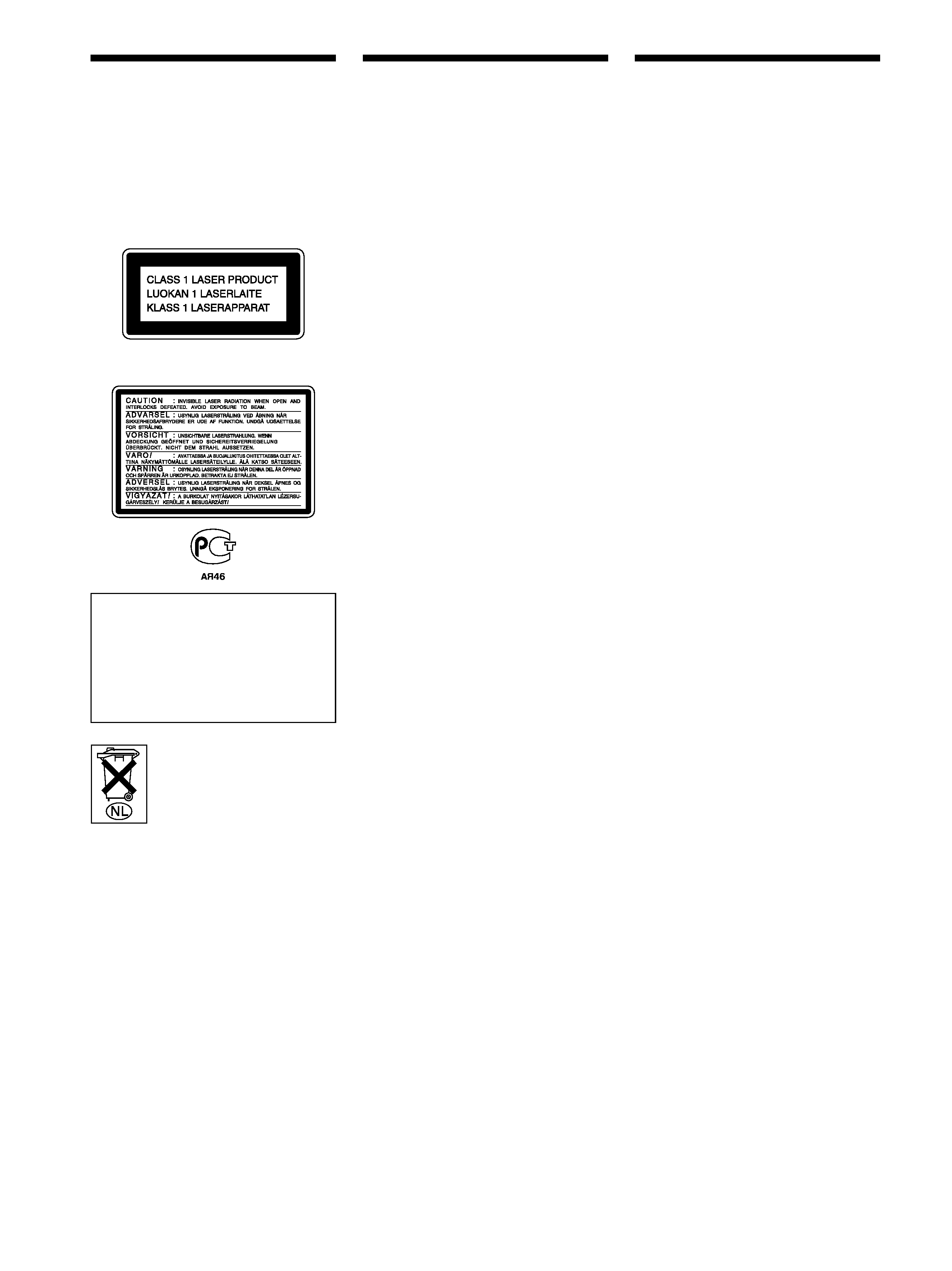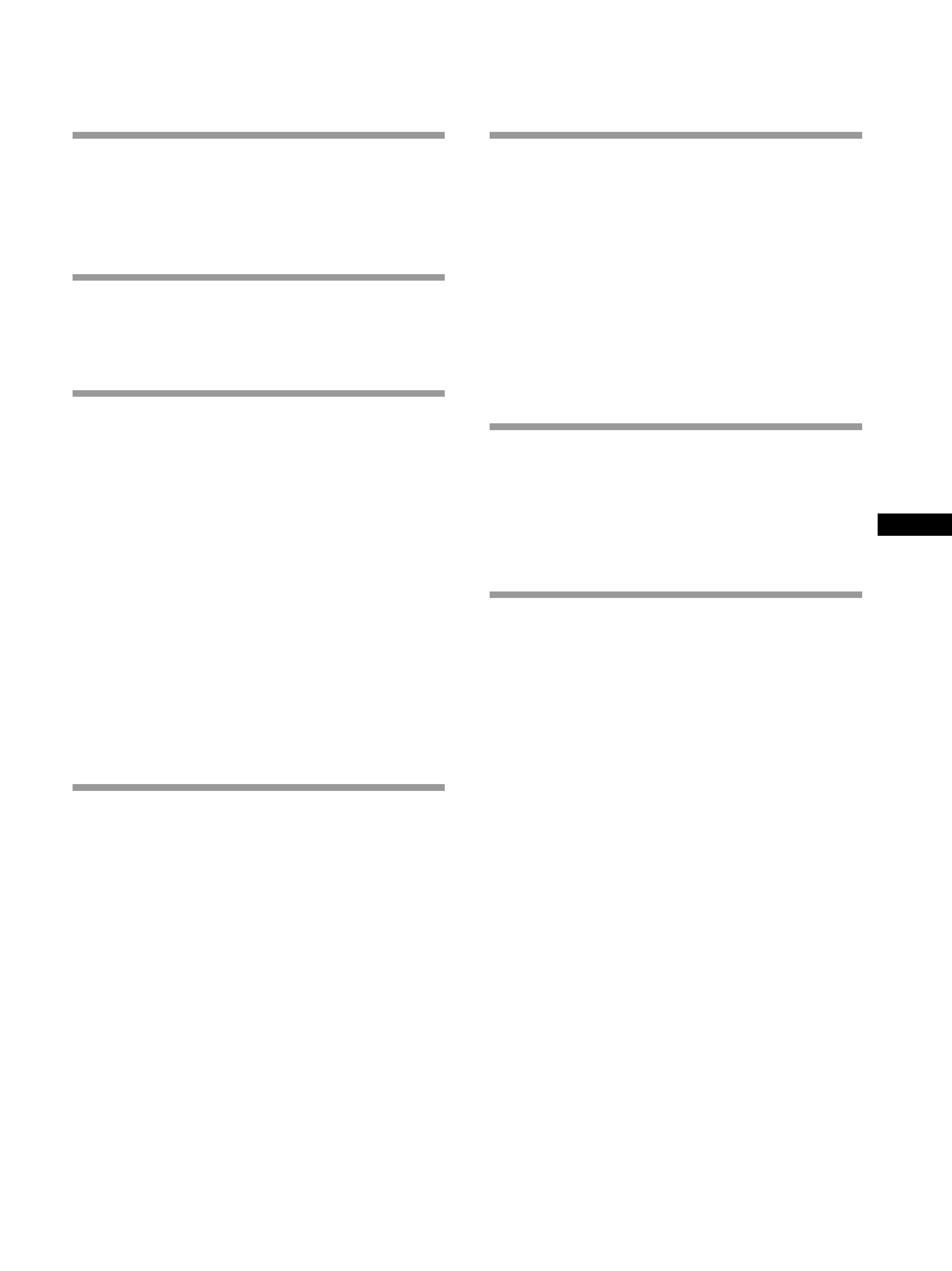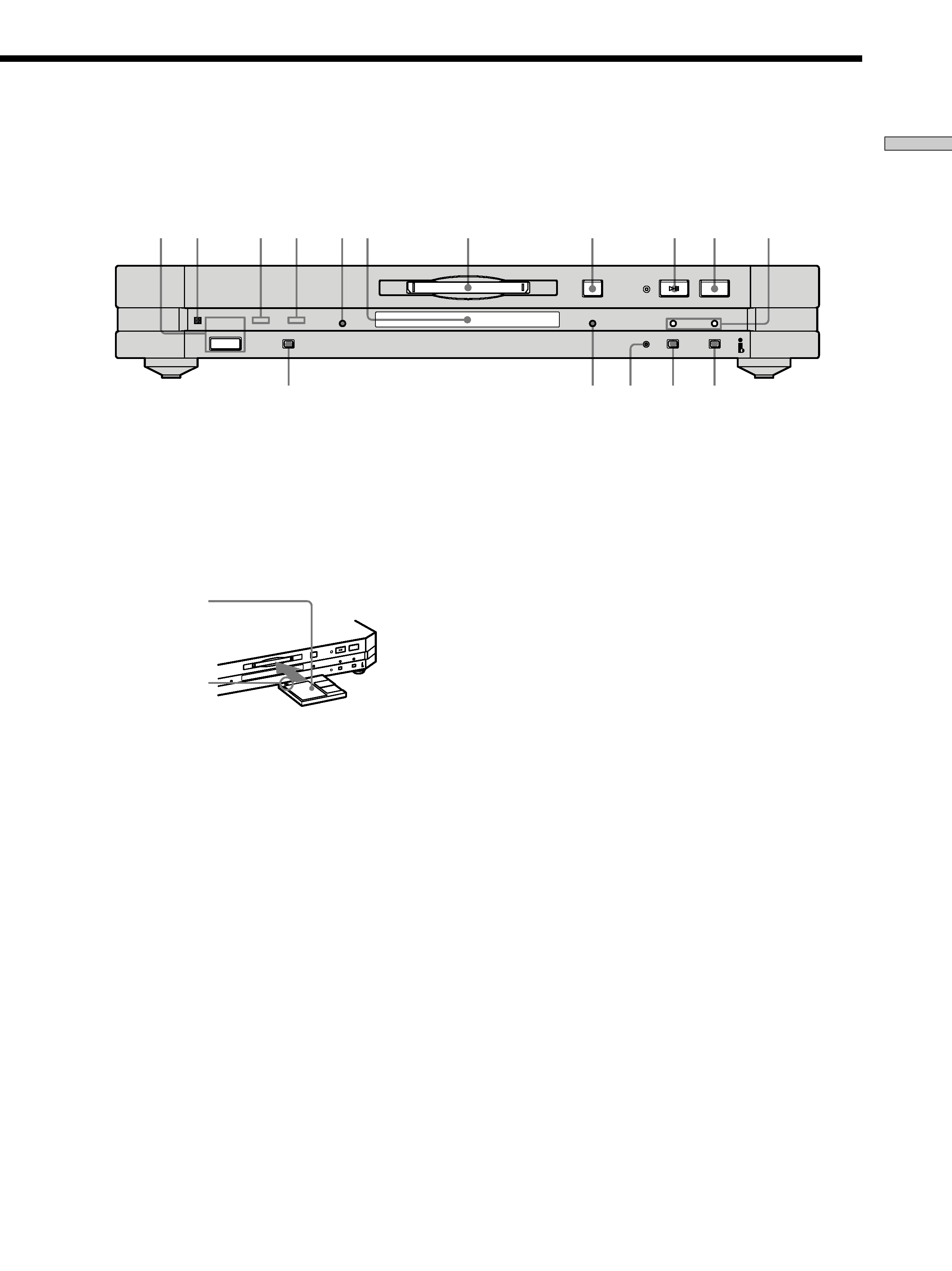
4-227-585-13(2)
MiniDisc Deck
2000 Sony Corporation
Operating Instructions
Mode d'emploi
GB
FR
S200
TM
MDS-LSA1

2GB
WARNING
To prevent fire or shock
hazard, do not expose the
unit to rain or moisture.
This appliance is classified as a CLASS 1
LASER product.
The CLASS 1 LASER PRODUCT
MARKING is located on the rear exterior.
The following caution label is located
inside the unit.
IN NO EVENT SHALL SELLER BE
LIABLE FOR ANY DIRECT,
INCIDENTAL OR CONSEQUENTIAL
DAMAGES OF ANY NATURE, OR
LOSSES OR EXPENSES RESULTING
FROM ANY DEFECTIVE PRODUCT OR
THE USE OF ANY PRODUCT.
Don't throw a battery, dispose
it as the injurious wastes.
Welcome!
Thank you for purchasing the Sony
MiniDisc Deck. Before operating the
deck, please read this manual
thoroughly and retain it for future
reference.
About This
Manual
Conventions
· Controls in these instructions are
those on the deck; these may,
however, be substituted by controls
on the supplied remote that are
similarly named, or, when different,
appear in the instructions within
parentheses.
Example: Press HX (or X).
· The following icons are used in this
manual:
Z
Indicates a procedure that
requires use of the remote.
z
Indicates hints and tips for
making the task easier.

3GB
GB
TABLE OF CONTENTS
Location and Function of Parts
4
Front Panel Parts Descriptions 4
Remote Parts Descriptions 6
Display Window Descriptions 8
Getting Started
10
Before You Start the Hookup 10
Hooking Up the i.LINK Components 11
Recording on MDs
12
Recording on an MD 12
Notes on Recording 14
Recording for Long Times 15
Adjusting the Recording Level 16
Recording Tips 16
Marking Track Numbers While Recording
(Track Marking) 17
Starting Recording With 6 Seconds of Prestored
Audio Data (Time Machine Recording) 18
Synchro-recording With the Audio Component of
Your Choice (Music Synchro-recording) 19
Synchro-recording With a Sony CD Player
(Normal/High-Speed CD Synchro-
recording) 19
Playing MDs
21
Playing an MD 21
Playing a Specific Track 22
Locating a Particular Point in a Track 22
Playing Tracks Repeatedly 23
Playing Tracks in Random Order (Shuffle Play) 24
Creating Your Own Programme
(Programme Play) 24
Tips for Recording From MDs to Tape 25
Editing Recorded MDs
27
Before You Start Editing 27
Erasing Tracks 28
Dividing Tracks 30
Combining Tracks 31
Moving Tracks 31
Naming Tracks or MDs 32
Undoing the Last Edit 34
Changing the Track Level After Recording (S.F
Edit) 35
Other Functions
36
Fade In and Fade Out 36
Adjusting the Brightness of the Display 37
Other Settings Using the Setup Menu 37
About i.LINK 38
Additional Information
40
Precautions 40
Handling MDs 41
System Limitations 41
Troubleshooting 42
Specifications 42
Display Messages 43
Edit Menu Table 44
Setup Menu Table 45
Self-Diagnosis Function 46
Index 47

4GB
Location and
Function of
Parts
This chapter tells you about the
location and function of the various
buttons and controls on the front
panel and the supplied remote.
Further details are provided on the
pages indicated in the parentheses.
It also tells you about the information
that appears in the display window.
Front Panel Parts
Descriptions
1 ~/1
(power) switch (12, 21)
Press to turn on the deck. When you turn on the deck,
the STANDBY indicator turns off. When you press the
switch again, the deck turns off and the indicator
lights up.
2
Remote sensor
Point the remote towards this sensor (
) for remote
operations.
3
LP indicator (15)
Lights up when LP2 or LP4 mode is selected, or when
a track recorded in LP2 or LP4 mode is being played.
4
H.A.T.S. indicator
Lights up when the H.A.T.S. function is activated on
the receiver.
z What is the H.A.T.S. function?
The H.A.T.S. (High-quality digital Audio Transmission
System) function on the receiver causes digital audio signals
output from an MD deck or the recording source (e.g., a CD
player) to be momentarily stored in a buffer in the receiver
prior to output. This reduces jitter that sometimes occurs
during digital audio transmission.
5
DISPLAY button (9, 13, 16, 20, 21)
· Press when the deck is stopped to display disc
information.
· Press during recording to display information on the
track being recorded or recordable time on the MD.
· Press during play to display information on the
current track.
· Press during Programme Play to display the number
of the track currently being played in the
programme.
· Press during recording or recording pause to adjust
the recording level.

5GB
Location
and
Function
of
Parts
1 23 4
5 6
7
qh
qg
qf
qd
qs
89
0
qa
STANDBY
LP
H.A.T.S
INPUT
DISPLAY
REC MODE
HIGH SPEED CD SYNCHRO
REC
.
>
?/1
A
x
z
6
Display window (8, 16, 32, 35)
Shows various information. For details, see "Display
Window Descriptions" on page 8.
7
MD insertion slot (12, 21)
Insert the MD as illustrated below.
x
A
.
>
z
8 A
button (12, 21)
Press to eject the MD.
9 HX
button (12, 19, 21, 22)
· Press when the deck is stopped to start play.
· Press during playback to pause play.
· Press during recording to pause recording.
· Press during playback pause or recording pause to
resume play or recording.
q; x
button (12, 20, 21)
Press to stop play or recording, or cancel the selected
operation.
qa ./>
buttons (12, 15, 16, 19, 21, 22)
Press to locate tracks or select a menu item and a
setting value.
qs
REC z button (12, 17)
Press to record on the MD or mark track numbers.
qd
CD SYNCHRO button (19)
Press to start CD Synchro-recording.
With the labelled
side up
With the arrow
pointing towards
the deck
qf
HIGH SPEED indicator (20)
Lights up when the deck is in High-speed CD
Synchro-recording mode.
qg
REC MODE button (15)
Press to select one of the following four recording
modes: MONO mode (monaural recording), stereo
mode (stereo recording), LP2 mode (2 times long
recording), and LP4 mode (4 times long recording).
qh
INPUT button (12)
Press once to display the selected programme source.
If the programme source is either the STR-LSA1 or the
CDP-LSA1, "N N n n" appears momentarily
in the display window of the component. Press the
button again to switch to another programme source.
